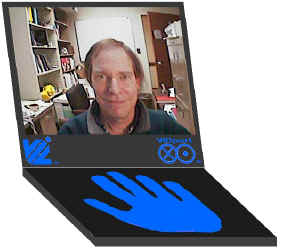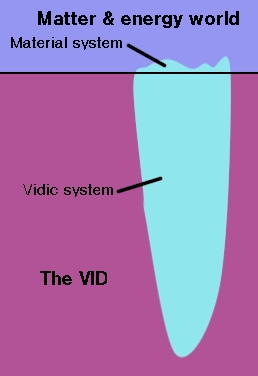|
|
| On February 15, 2001, I gave an invited talk at the distinguished
Xerox PARC Forum, in Palo Alto, California. The title of the talk
was:
The Vid is the computer: Abstract and biography are included below. Contact me for questions, comments, or collaboration.
The room was not packed. And quite a few people left during the talk. This made it very clear to me just how innovative and out of the box and politically incorrect any discussion of virtual information is today. Those who stayed appeared to enjoy the talk. There were some very good questions on camera. And some nice discussions down front after the forum closed, and out in the parking lot.
I hope I live long enough to see some of my predictions come true. And I hope I get the chance to help bring this about. Many thanks to Xerox PARC and Dave White for this opportunity to talk openly about the Vid in a historically significant setting.
Discovering the Virtual Information Domain, transcending Moore’s Law, and vidic technologies beyond imagination
Abstract: In biological, physical, and psychological domains there are many anomalous phenomena that could be explained by an information infrastructure in the vacuum, separate from but interacting with matter and energy. This is the Virtual Information Domain -- the VID. (Sounds like vid in video.)
The VID appears to have unlimited memory, processing power, and bandwidth. It appears to be hierarchically self-organizing (with built-in privacy and security), unlimited by time and space, and programmable by intent. It could be the substrate for thought and consciousness. If the VID is real, the implications for science, technology, and society are staggering. In science we could find vidic mechanisms involved in molecular biology, genomics, animal behavior, evolution, and Gaia. New vidic technologies could be developed for truly ubiquitous computation and communication, true artificial intelligence, remote sensing and actuation, art, and medicine. The VID could bring intelligence to nanotechnology. Today’s information technology would soon look like a quaint prototype. Business opportunities would be bigger than anything we have known. Individual human value, integrity, and fulfillment would take on new meaning and perspective. Gaia would have her voice. Materialism would begin to appear limited and passé.
On the other hand, if the VID is not real, then we can continue to enjoy our limited materialistic life and keep ignoring a lot of unexplained anomalies. I will briefly address information physics, a selection of observed anomalies, vidic technology and business possibilities, and a research agenda.
Chris Duffield Ph.D. is a Visiting Scholar in the Department of Materials Science and Engineering
[through March 2001] at
Stanford University; intuitive futurist consultant; Director of the Virtual Information Lab; and webhost of
IPTQ.org, a medical website.
Websites: http://www.iptq.com/cd/parc.htm [Special page for PARC audience] http://www.iptq.com/cd/ [Personal website] http://www.iptq.org [IPT website]
Here is the poster for the talk... I think it's great.
|
 The talk was
videotaped, and is archived on the web and playable on
demand.
The talk was
videotaped, and is archived on the web and playable on
demand.  Looking back, I wish I had focused more on details of research
results, transducers, vidic architectures, programming methods,
etc. (However, some items are proprietary, and others are
covered by confidentiality in my consulting.) This would have made the
Vidic vision more tangible for the
audience. Well, I'll cover those things in my next talk...
Any invitations??
Looking back, I wish I had focused more on details of research
results, transducers, vidic architectures, programming methods,
etc. (However, some items are proprietary, and others are
covered by confidentiality in my consulting.) This would have made the
Vidic vision more tangible for the
audience. Well, I'll cover those things in my next talk...
Any invitations??


 If the VID is real, it is likely that extraterrestrial
intelligences even slightly more advanced than ours are active in it
and have abandoned inefficient electromagnetic communication. When
SETI peers into the VID, we may find a vast and fabulous ancient
Internet already waiting for us -- our legacy and our destiny.
If the VID is real, it is likely that extraterrestrial
intelligences even slightly more advanced than ours are active in it
and have abandoned inefficient electromagnetic communication. When
SETI peers into the VID, we may find a vast and fabulous ancient
Internet already waiting for us -- our legacy and our destiny.
